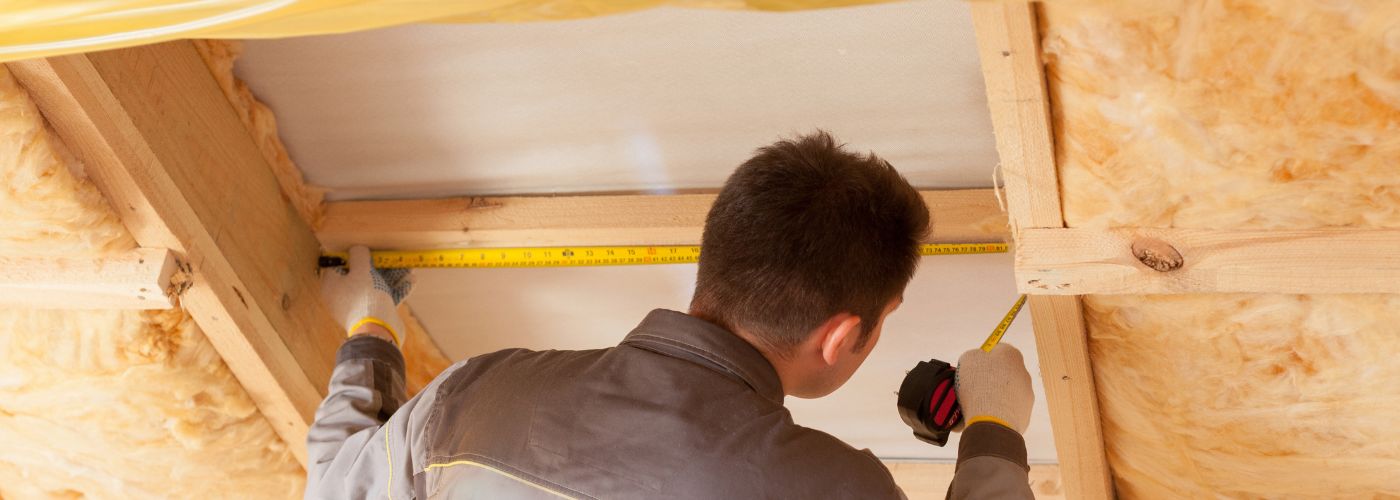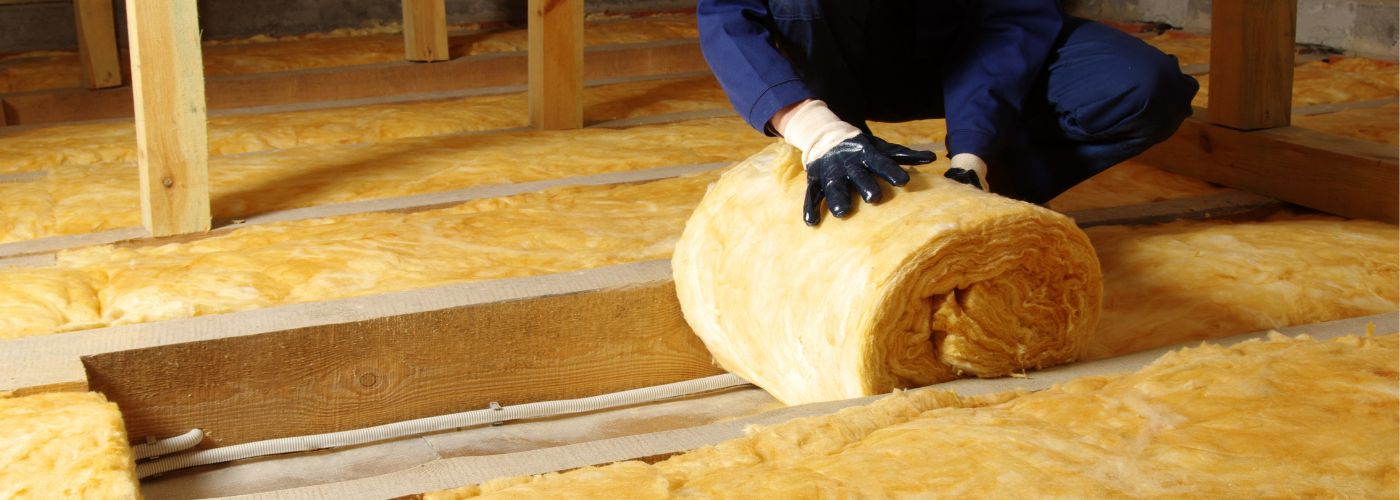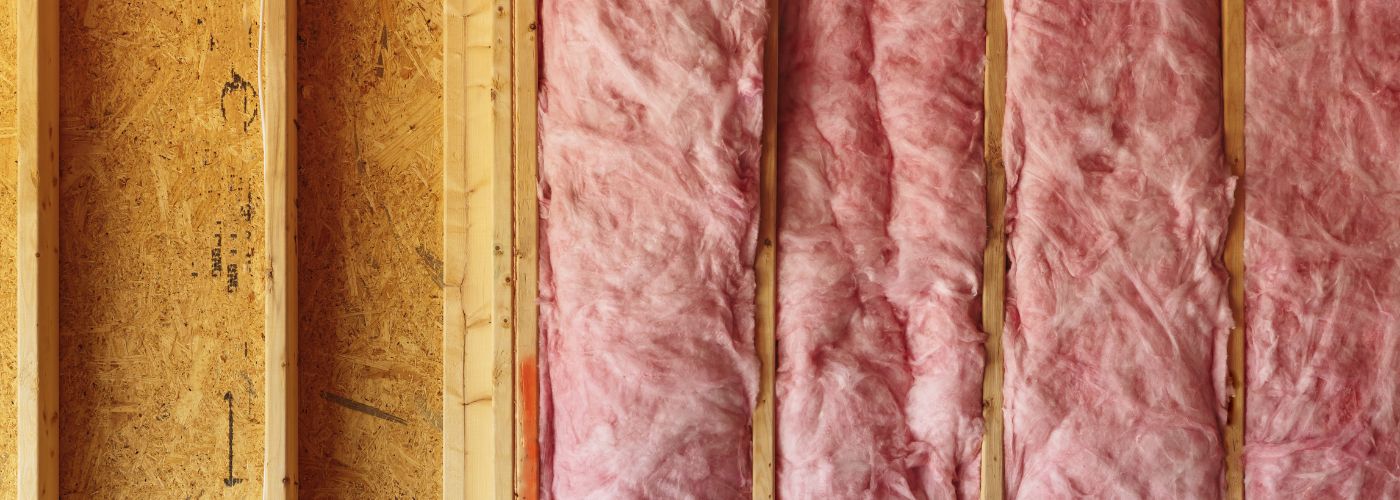When it comes to maintaining a comfortable and energy-efficient home, nothing makes a bigger difference than insulation. Attics, in particular, play a major role in regulating your home’s temperature and energy consumption. In this blog, we’ll take a look at what attic insulation materials might be the best choice for you, as well as other important considerations for keeping your home livable and well-maintained.
What Is The Best Attic Insulation?
Selecting the best attic insulation for your home depends on factors such as your climate, budget, and long-term goals. While there’s a broad range insulation materials for you to choose from, five stand out as popular choices thanks to their effectiveness:
Fiberglass Insulation: This widely-used insulation material is composed of fine glass fibers. Typically sold in blanket rolls or batts, fiberglass insulation is comparatively affordable and provides great thermal resistance and durability, helping prevent heat transfer between your attic and living space.
Cellulose Insulation: Made from recycled paper and treated with fire-resistant chemicals, cellulose insulation is a highly effective and eco-friendly option. It can be blown into the attic, filling gaps and creating a seamless barrier against heat loss.
Spray Foam Insulation: This type of insulation expands once it’s applied, filling even the tiniest crevices and spaces. Spray foam insulation creates an airtight seal, offering exceptional energy efficiency and moisture buildup prevention. However, due to the precision required during the application process, it is recommended that you have a professional technician handle the installation.

Rigid Foam Insulation: Rigid foam boards provide high thermal resistance and can effectively insulate and prevent leaks in attics with limited space. As these rigid boards aren’t flexible, covering small cracks and areas may require using this insulation in combination with other insulation materials.
Mineral Wool Insulation: Derived from minerals like basalt, slag, and diabase, mineral wool insulation is fire-resistant and offers soundproofing benefits along with thermal insulation. While recognized for its effectiveness, mineral wool insulation can be heavier and more difficult to install than other insulation materials, as well as more costly.
Should I Insulate My Attic Floor or Ceiling?
The decision to insulate the attic floor or ceiling depends on how you plan on using your attic, as well as the overall design of your home. Insulating the attic floor is generally recommended for unfinished attics that are used for storage or remain unoccupied. This approach helps maintain a consistent temperature in the living spaces below and prevents heat from escaping into the attic.
Insulating the attic ceiling may be a better choice if you plan on converting your attic into a habitable space. This ensures that the conditioned air remains within the attic space, creating a comfortable environment. Proper ventilation is crucial in this case to prevent moisture buildup.
How Long Does Attic Insulation Last?
The lifespan of your attic insulation can depend on a few different factors, ranging from the type of insulation material used to the quality of installation to the climate conditions around your home. Typically, attic insulation can last anywhere from 20 to 100 years. Fiberglass and cellulose insulation tend to have longer lifespans, while spray foam insulation can last a lifetime with proper care.
To maximize the longevity of your attic insulation, it’s important to regularly inspect for signs of damage, moisture, or settling. If you notice any issues, addressing them promptly can help maintain the insulation’s effectiveness and prevent energy loss.
How To Remove Insulation From Attic?
There are times when removing attic insulation becomes necessary, such as when upgrading to a more efficient insulation material or addressing mold or pest issues. Here’s a step-by-step guide to help you safely remove insulation from your attic:
Safety Precautions: Before starting, ensure you have appropriate safety gear, including gloves, a dust mask, and protective clothing. Be mindful that fiberglass insulation, while effective and widely used, may cause irritations if directly touched or inhaled.
Assessment: Determine the type of insulation and its condition. If the insulation is damaged or contaminated, removal may be necessary.
Power Down: Turn off the power supply to the attic to avoid any electrical hazards.
Clear the Area: Remove any items stored in the attic to create a clear and well lit workspace.

Vacuum or Remove: Depending on the insulation type, you can use a vacuum, insulation removal machine, or hand tools to carefully remove the insulation. Be gentle when working to avoid damaging the attic structure.
Dispose of Insulation: Always make sure to follow local regulations for disposing of insulation materials. Some insulation materials may require special disposal methods.
Clean and Inspect: After removal, thoroughly clean the attic space and inspect for any remaining insulation or potential issues. A musty or mildewy scent may indicate the presence of moisture damage or mold.
Install New Insulation: If desired, install new insulation following recommended guidelines and best practices. It may be helpful to consult with a professional to ensure your new insulation is installed properly. Chest pain, coughing, shortness of breath, fatigue, weight loss, difficulty swallowing, and swelling in the face or neck may all be signs of asbestos or fiberglass exposure and can pose serious risks to your health.
Attic insulation is an essential component of a well-insulated home, contributing to energy efficiency, cost savings, and comfort. By choosing the right insulation material, monitoring the insulation’s lifespan, and knowing how to remove insulation when necessary, homeowners can ensure their attics are properly insulated for years to come.
Whether you’re looking to maintain your attic insulation or upgrade for better performance, making informed decisions will lead to a more comfortable and energy-efficient living environment.
